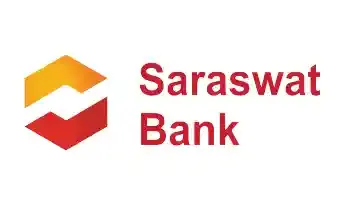Get instant loan offer suitable to your profile !


On this Page:
Understand with GyanDhan cosigner the meaning and role of co-applicants in education loans, eligibility, document requirements, and more. Slug: role-of-co-applicant-in-education-loans
When you're looking into student loans without collateral, you'll often come across the term "co-applicant." It might sound complicated, but it's actually pretty straightforward. A co-applicant is someone who teams up with the main borrower – usually the student – to apply for the loan. This person shares the responsibility of education loan repayment, which is especially helpful while the student is still studying.

Having a co-applicant can be a big plus. It can boost your chances of getting the loan approved, possibly get you lower interest rates, and means you're not the only one responsible for the loan. Co-applicants give lenders more confidence by showing that there's more financial stability behind the loan. For students and their families, understanding this part of student loans is really important. It's not just about focusing on your studies – you also need to be smart about handling the financial side of things. Co-applicants can be a big help in sharing the load.
A co-applicant or a cosigner in education loan is an individual with a stable financial profile who jointly signs the education loan agreement with the student borrower. Unlike a co-signer or guarantor, a co-applicant actively shares the loan burden rather than merely serving as a backup payment method. In essence, they become the primary contact for banks in case the student borrower faces challenges in repayment.

There are two primary types of co-applicants:



Different lenders have different eligibility criteria for being a co-applicant.




Co-applicants in education loan eligibility criteria aim to ensure a close and reliable connection between the student borrower and the co-applicant, establishing a strong foundation for shared responsibility.



Must Read: Education loan eligibility criteria

Both guarantors and co-applicants help borrowers secure a loan, yet they have different roles and responsibilities in the education loan application process. A guarantor is an individual who is responsible for the education loan repayment if the borrower defaults. Whereas, a co-applicant is a person who jointly applies for the loan and shares equal responsibility for repayment of the education loan. Below are listed some primary differences between a co-applicant and a guarantor.








Must Read: Tax benefits on eduction loan
It's important to note that specific eligibility criteria may vary among lenders, necessitating careful consideration and consultation with individual financial institutions.

| Salaried Co-Applicant | Self-Employed Co-Applicant |
|---|---|
|
Salary slip for the last 3 months |
Business address proof (GST certificate/ MSME certificate/ Utility bill) |
|
Copy of Form 16 or IT Returns for the last 2 years |
TDS Certificate (Form 16A) and P&L balance sheet. |
|
Bank statement for the last 6 months |
IT returns for the last 2 years filed with a minimum gap of 6 months |
|
A brief statement of assets & liabilities |
Certificate of qualification for C.A., doctor, and other professionals |
Read More About: Education Loan with Backlogs

Applying for an education loan with a co-applicant increases your chances of approval and helps you secure a lower interest rate. A co-applicant is typically someone with a good CIBIL score and financial stability, such as a parent or guardian. Below are the general steps to apply for an education loan with a co-applicant.






The role of a co-applicant in education loans is undeniably significant, offering a pathway for students to access financial support with increased credibility and favourable terms. Choosing a co-applicant wisely, someone with a stable income, a positive credit history, and a shared commitment to the educational journey, can greatly enhance the chances of loan approval and more favourable interest rates.
For a seamless and hassle-free experience in securing the best education loan without the need for numerous branch visits, GyanDhan emerges as a valuable ally. GyanDhan, a leading education financing platform, has revolutionized the loan application process, providing a user-friendly online platform that connects students with lenders offering tailored education loans. Through GyanDhan's innovative approach, you can explore multiple loan options, compare interest rates, and benefit from personalized guidance without even stepping out of your comfort zone. Not only this, but all services at GyanDhan are completely free of cost. To start, check your loan eligibility now.
Read Also
Documents Required for Education Loan
Education Loan Details: Eligibility Criteria and Basic Documents Requirement
Education Loan Without Cosigner for Abroad Studies
Get Education Loan without Parental Income for Abroad

Frequently Asked Questions
What is co-applicant in education loan?
A co-applicant or a cosigner in an education loan is an individual with a stable financial profile who jointly signs the education loan agreement with the student borrower.
What is a co-applicant responsible for?
A co-applicant is a person who shares equal responsibility for repayment of the education loan with the borrower.
Can a friend be a co-applicant for education loan?
A co-applicant can be your parents, siblings, spouse or immediate family member depending on the type of lender you choose. The co-applicant in any case should have a decent CIBIL score and monthly income and is willing to take equal responsibility for repayment of the education loan.
What is the difference between a guarantor and a co-applicant?
A guarantor is an individual who is responsible for the education loan repayment if the borrower defaults. Whereas, a co-applicant is a person who jointly applies for the loan and shares equal responsibility for repayment of the education loan.
Check Your Education Loan Eligibility

Ask from a community of 10K+ peers, alumni and experts
Trending Blogs
Similar Blogs

Network with a community of curious students, just like you
Join our community to make connections, find answers and future roommates.. Join our CommunityCountry-Wise Loans
Best Lenders for Education Loan

ICICI Bank

Axis Bank

Union Bank

Prodigy

Auxilo

Credila

IDFC

InCred

MPower

Avanse

SBI

BOB

Poonawalla

Saraswat